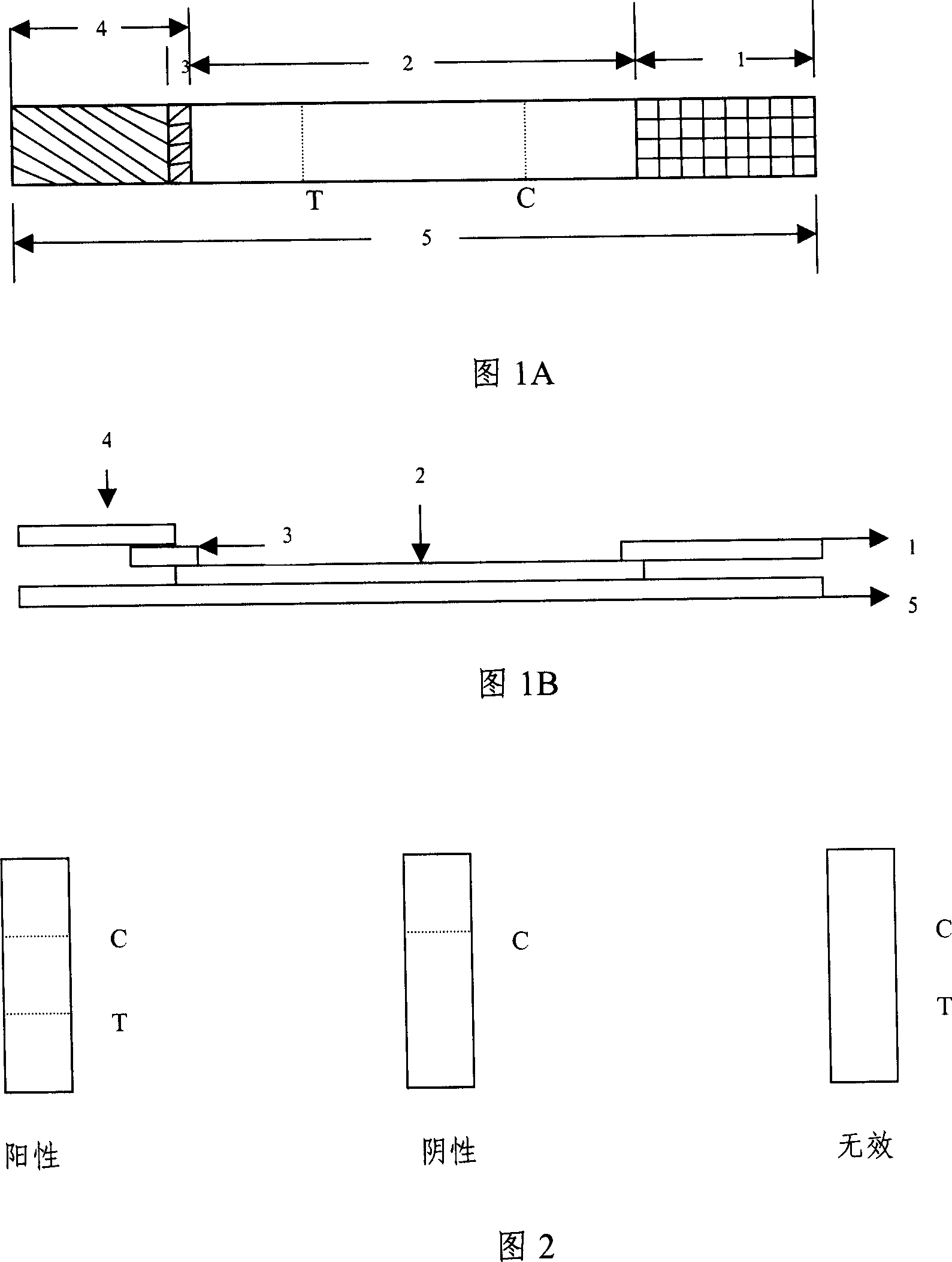Test paper bar for testing colloidal gold of F1 antibody of plague bacterium
A technology for detecting test strips and F1 antigens, applied to measuring devices, instruments, scientific instruments, etc., can solve the problems of complex operation, long time, and tediousness, and achieve clear and easy-to-distinguish results and simple operation
- Summary
- Abstract
- Description
- Claims
- Application Information
AI Technical Summary
Problems solved by technology
Method used
Image
Examples
Embodiment 1
[0029] Example 1 Yersinia pestis F1 antigen detection test strip (see Figure 1)
[0030] The reaction support is a 6.5cm×0.4cm PCV plate; the absorbent pad is a 2cm×0.4cm oil filter paper; the 1.8cm×0.4cm nitrocellulose membrane is coated with anti-mouse IgG and plague F1 antibody in turn; it contains 0.4cm×0.4cm colloid Gold-labeled plague F1 monoclonal antibody glass fiber membrane; the gold-labeled antibody protective film is a 2.7cm×0.4cm polyester film; that is, a test strip for the detection of Yersinia pestis F1 antigen is formed.
Embodiment 2
[0031] Example 2 Test strips for detection of Yersinia pestis F1 antigen (see Figure 1)
[0032] The reaction support is a 6.5cm×0.4cm PCV plate; the absorbent pad is a 2cm×0.4cm oil filter paper; the 1.8cm×0.4cm nitrocellulose membrane is coated with anti-mouse IgG and plague F1 antibody in turn; it contains 0.4cm×0.4cm colloid Gold-labeled plague F1 monoclonal antibody glass fiber membrane; the gold-labeled antibody protective film is 2.7cm×0.4cm glass fiber; that is, a test strip for the detection of Yersinia pestis F1 antigen is formed.
Embodiment 3
[0033] Example 3 Test strips for detection of Yersinia pestis F1 antigen (see Figure 1)
[0034] The reaction support is 6.=5cm×0.4cm PCV plate; the absorbent pad is 2cm×0.4cm oil filter paper; the nitrocellulose membrane of 1.8cm×0.4cm is coated with anti-mouse IgG and plague F1 antibody in sequence; cm colloidal gold-labeled plague F1 monoclonal antibody glass fiber membrane; the gold-labeled antibody protective film is a 2.7cm×0.4cm filter paper fiber; that is, a test strip for the detection of Yersinia pestis F1 antigen is formed.
PUM
 Login to View More
Login to View More Abstract
Description
Claims
Application Information
 Login to View More
Login to View More - R&D
- Intellectual Property
- Life Sciences
- Materials
- Tech Scout
- Unparalleled Data Quality
- Higher Quality Content
- 60% Fewer Hallucinations
Browse by: Latest US Patents, China's latest patents, Technical Efficacy Thesaurus, Application Domain, Technology Topic, Popular Technical Reports.
© 2025 PatSnap. All rights reserved.Legal|Privacy policy|Modern Slavery Act Transparency Statement|Sitemap|About US| Contact US: help@patsnap.com

